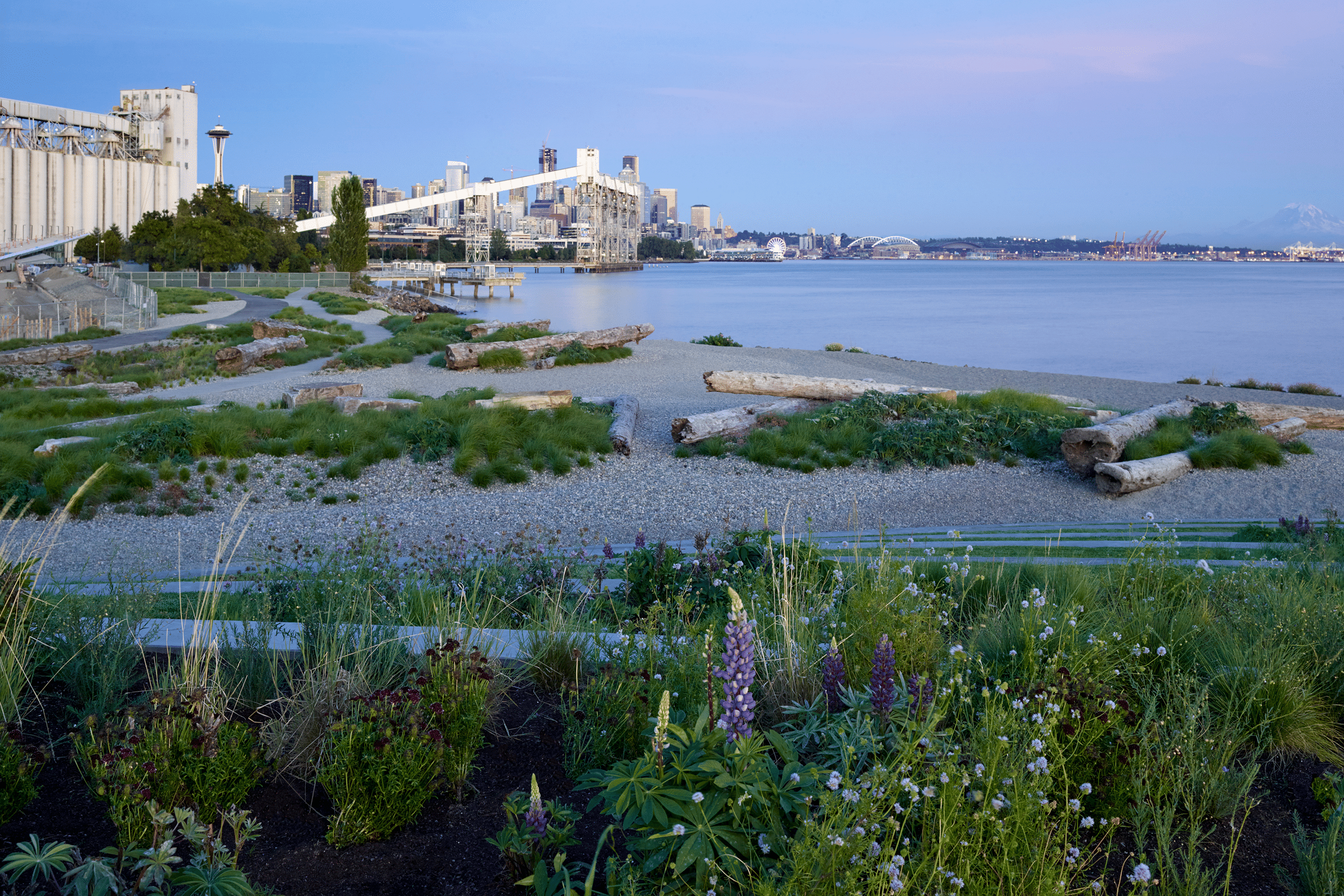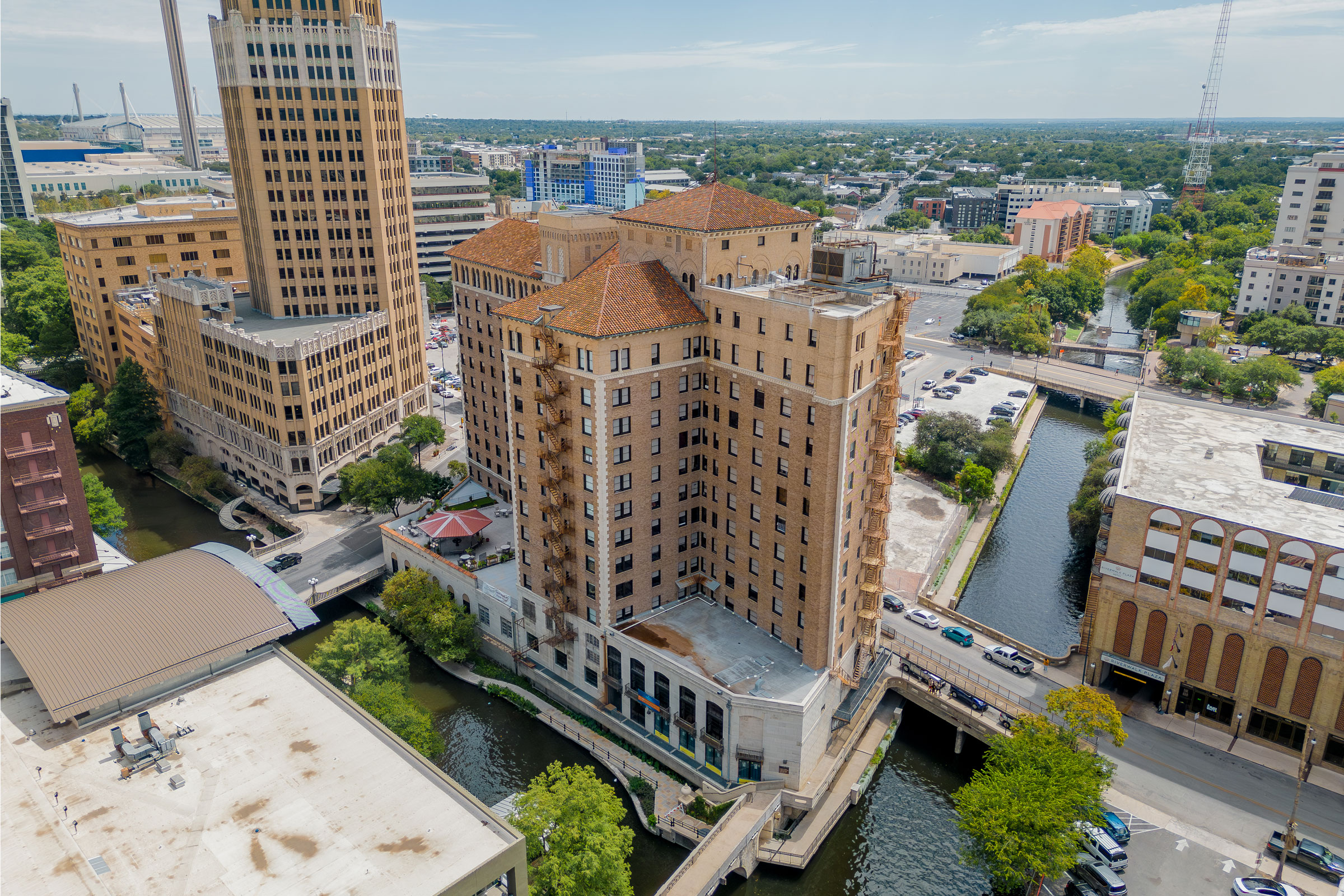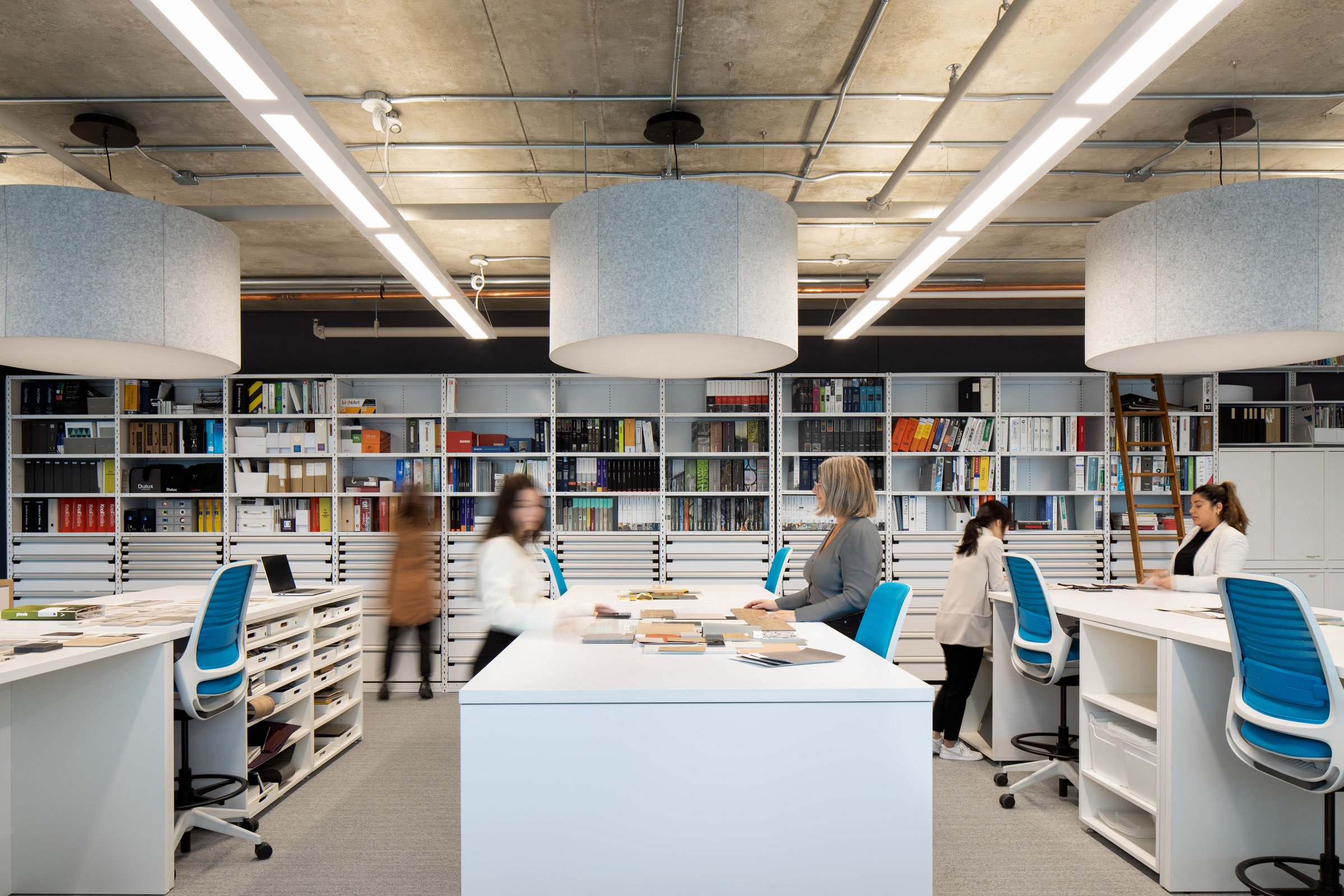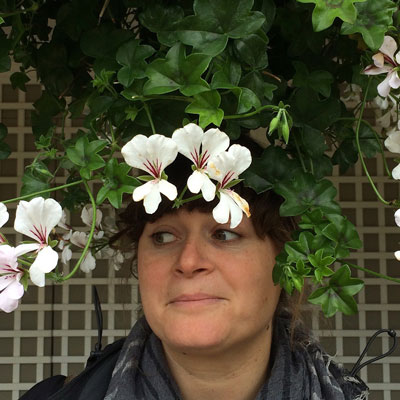Story at a glance:
- Surfacedesign’s The Beach at Expedia Group celebrates Seattle’s coastal landscape.
- Adaptive reuse and material reclamation were core principles of the project.
- A comprehensive soil program was developed to build and restore conditions consistent with native soils to support new vegetation.
The Beach at Expedia Group is a recently constructed celebration of the Seattle coast’s rugged informality at the edge of Elliott Bay on Puget Sound, just north of downtown Seattle. More than a quarter-mile of waterfront inspired by the native coastal landscape, The Beach connects Elliott Bay Trail and carves out spaces for people to gather by the bay.
Before this project was completed the site’s shared bicycle and pedestrian path had a blind turn that was often submerged during storm events, making cycling or walking along the path dangerous. This new portion of the Elliott Bay Trail separates and expands both a bike and pedestrian path. The paths through The Beach are raised to account for rising seas and flood events.
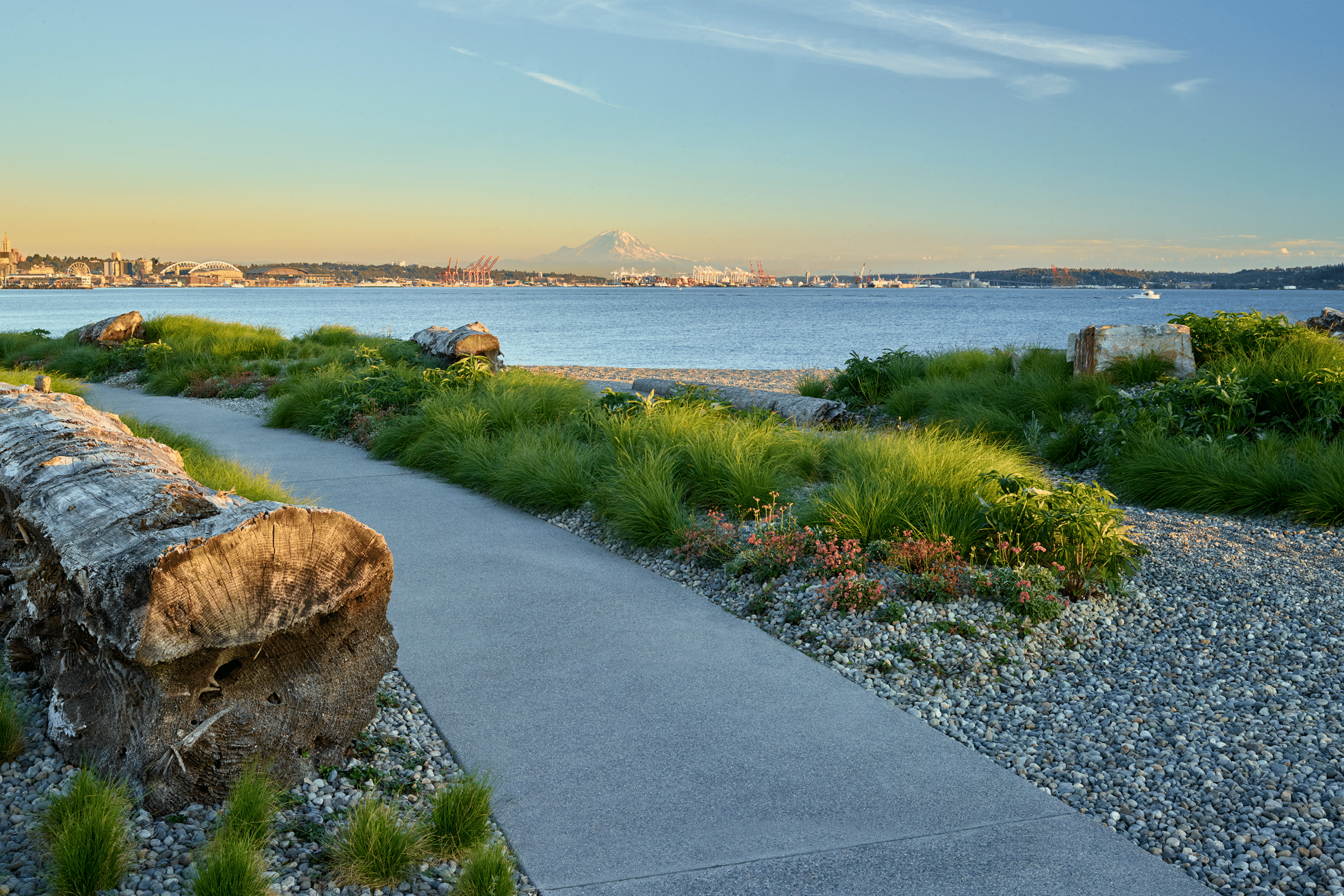
The project redesigned pedestrian and bicycle paths to improve safety and upgrade the existing Elliott Bay Trail. Photo by Marion Brenner
The braided paths curve gently through the center of the dunes, immersing visitors and bicycle commuters in the amplified coastal landscape. Bioretention areas are seamlessly integrated into the topography and planting approach, treating runoff from the paths in compliance with the project’s Salmon-Safe certification while creating habitat opportunities. At the park’s southern boundary, the landscape swells to create a terraced overlook that celebrates the site’s vantage point, providing unbelievable views of Mount Rainier, Puget Sound, and the Seattle skyline.

Gravel dunes and a terraced amphitheater aesthetically mitigate storm events, and bioretention meadows naturally filter runoff. Photo by Marion Brenner
Reclaiming Materials
Material reclamation and adaptive reuse were core principles of the design process for both The Beach and the adjacent 40-acre Expedia Global Headquarters campus. The existing site (previously the home of Amgen’s Seattle Campus, and before that a series of pier shed buildings) had a series of formal landscape spaces that featured stone paving and monolith features. The stone onsite was stockpiled and reimagined for the new campus, including informal stone groupings nestled into the dune planting on the Beach.
Inspired by the driftwood that washes onto the shores of Washington beaches, knotty spruce “boom sticks” from a decommissioned log mill in Port Angeles were brought to the site and nestled into the planting and gravel dunes. The reclaimed stone boulders and driftwood break up the planting while also functioning as informal seating and play areas. A subtle gradient of beach pebbles and river rocks meander around the planted dunes, recalling Ruby Beach in Washington’s Olympic National Park and the estuaries of the state’s far western reaches.
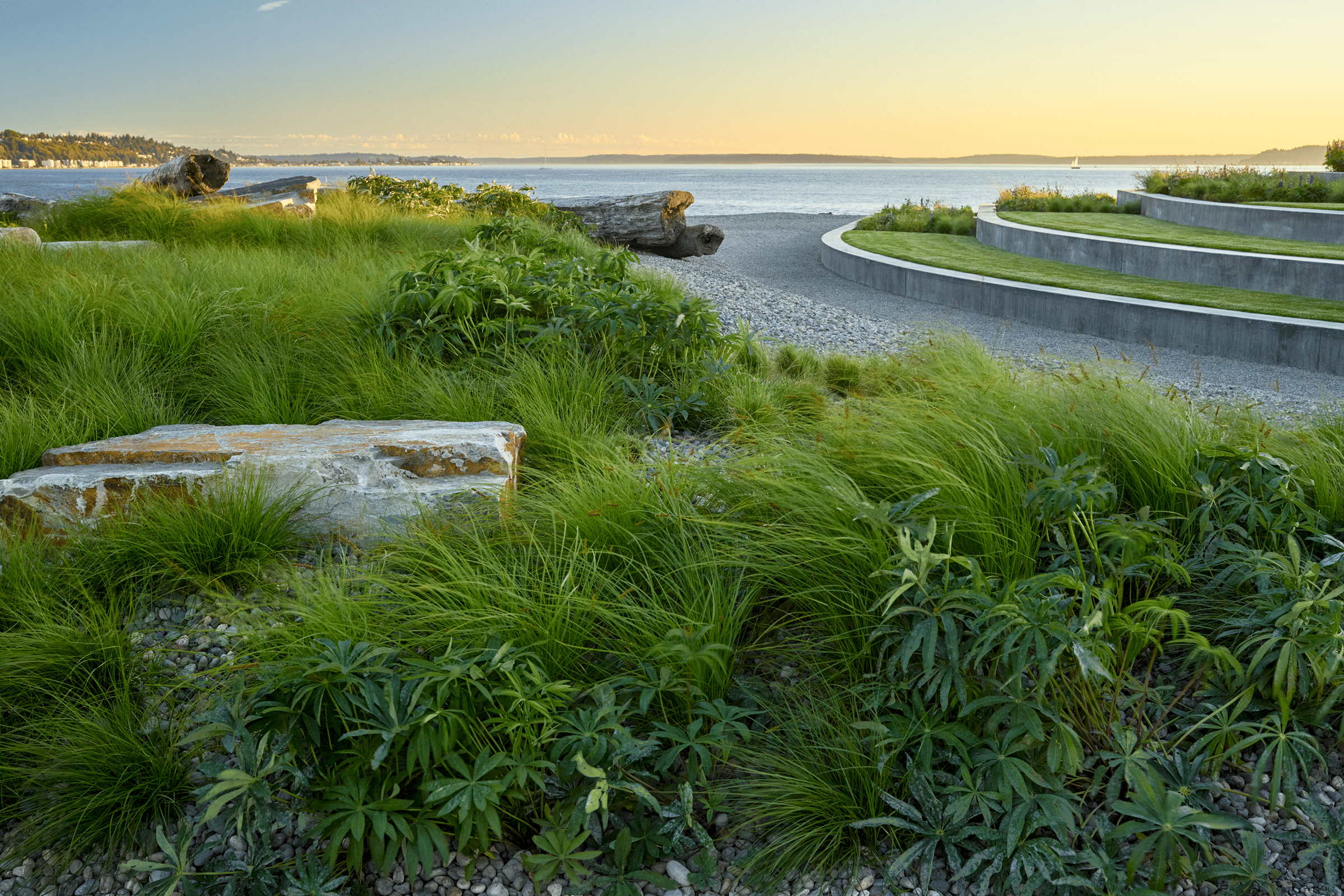
The project’s planting approach was to use native plants of Puget Sound, as well as plants that increase wildlife. Photo by Marion Brenner
Using Native Plants
Within The Beach, the planting approach is designed to emulate the character of Puget Sound by using four native grasses (Carex pansa, Carex vulpinoidea, Deschampsia cespitosa, and Elymus mollis) accented by native perennial plants in soft hues. The perennials include beach strawberry, gumweed, seashore lupine, and wild buckwheat.
Along the public waterfront paths, a vibrant coastal-meadow palette creates a seasonally varied horticultural experience as visitors move through the site. This planting is a mix of seven native meadow grasses (Agrostis exarata, Bromis carinatus, Danthonia californica, Deschampsia cespitosa, Elymus glaucus, Hordeum brachyantherum, and Koelaria macrantha), with pink, purple, and yellow native perennial accents that flower throughout the year. These tonal palettes are arranged in bands, creating a series of rhythmic thresholds for visitors as they move along the waterfront.
Due to its location along Elliott Bay, special attention was paid to plants that provide wildlife habitat. Perennials like fireweed (Chamerion angustifolium), flax (Linum perenne), and goldenrod (Solidago canadensis) attract insects that are eaten by salmon. A mix of native and adapted trees species weave between the paths and were selected for their hardiness, shade, habitat, and seasonal interest, from Oregon ash and Oregon white oak to lodgepole pine. A drift of black birch pulls visitors to the top of the terraces and frames views of the active shipping and maritime uses of the adjacent pier, as well as open views out to the water.
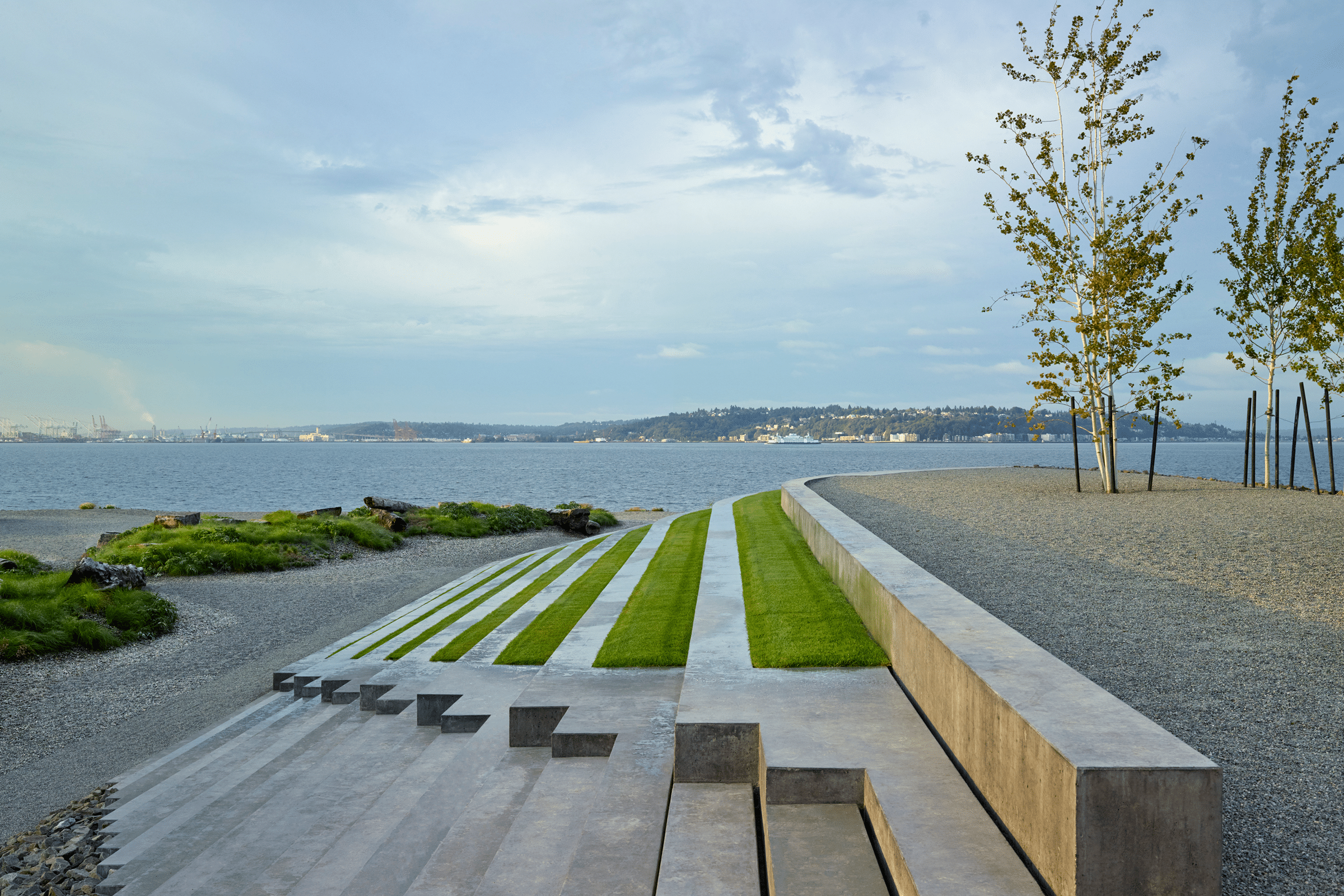
Photo by Marion Brenner
Managing the Soil
Soil management was a critical component of the design of Expedia’s campus and The Beach. A comprehensive assessment of the mostly paved, substantially disturbed existing site was conducted at project onset. While most of the existing soil’s healthy qualities had been lost, some vestiges of microbiological life were discovered, and this oil was stockpiled for future use.
A comprehensive soil program was developed to build and restore conditions consistent with native soils in the area to support the new vegetation with reduced needs for irrigation, fertilization, and frequent management. To achieve this soil profiles were designed to rebuild natural conditions, including soil horizons similar to those found in the local natural environment. Taking this approach, the soil profiles were constructed that both reproduce natural function with minimal inputs and also meet site-use demands. This approach established sustainable and resilient soils and planting communities that will continue to grow into natural balance with the Seattle environment.
The harvested site soil that had tested positively for ecological benefits and long-term landscape health was used to inoculate the compost and base loam soil used to build the eight custom blends that correlated with the site’s distinct planting communities. Soil testing and monitoring after installation informed formulation of compost tea blends used to seasonally inoculate the soil and plants, stimulating biological activity and resilience without the use of chemical fertilizers or other inputs.
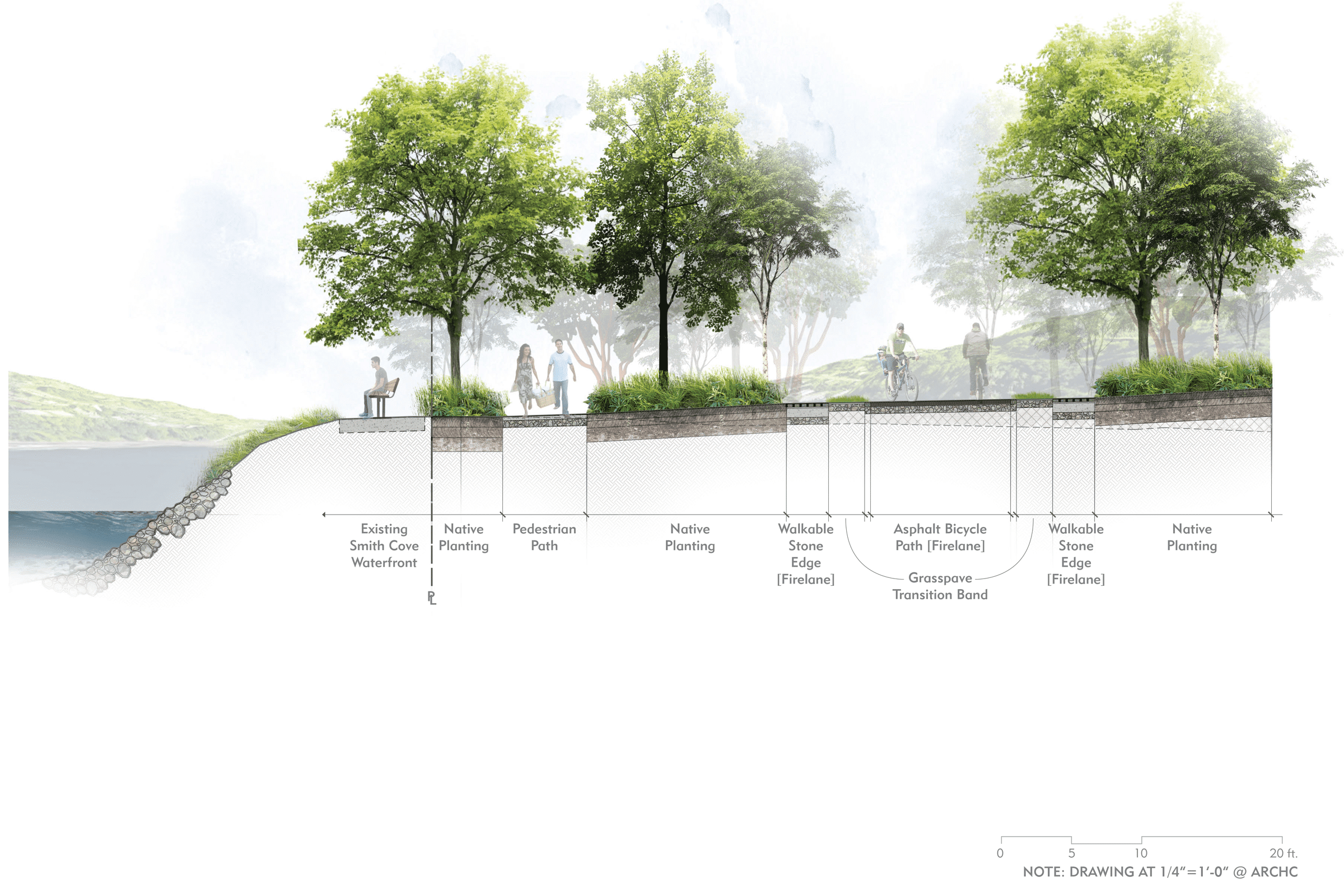
Illustration courtesy of Surfacedesign
Waterfront Stewardship
The Beach invites users to pause at the edge of Elliott Bay. Celebrating the land-water threshold, reclaimed materials and vibrant native plantings highlight the sculpted topography of the dunes. The gravel gradient creates a subtle patterning that shimmers in the light as the waves of the Sound ripple in the distance.
Sinuous bike and pedestrian paths are coupled with the open gravel swaths within the beach where visitors can discover their own routes. Curved stepped terraces allow for groups or individuals to gather at multiple elevations and take in views of the larger regional landscape.
In its essence The Beach at Expedia Group is a place to celebrate and reinforce sense of place while defining a new landscape approach centered on stewardship.

